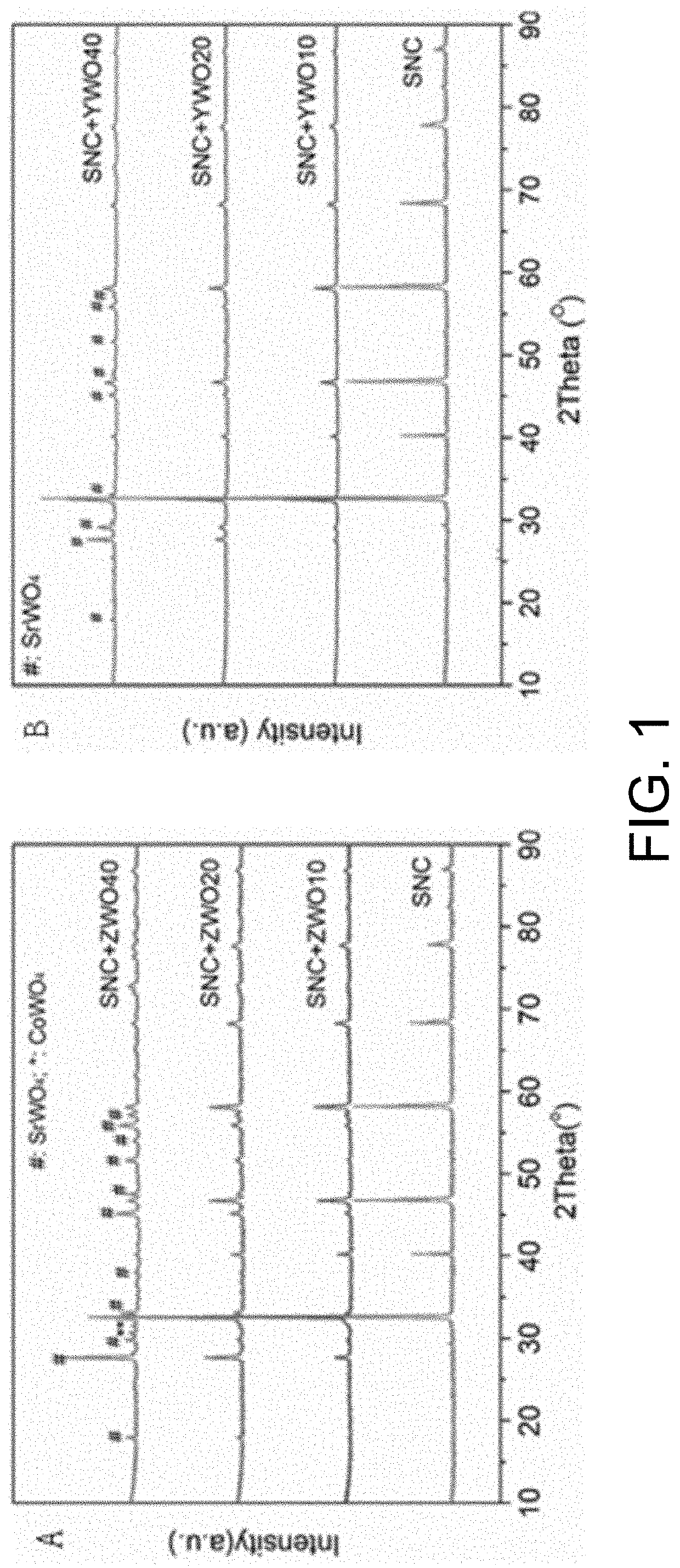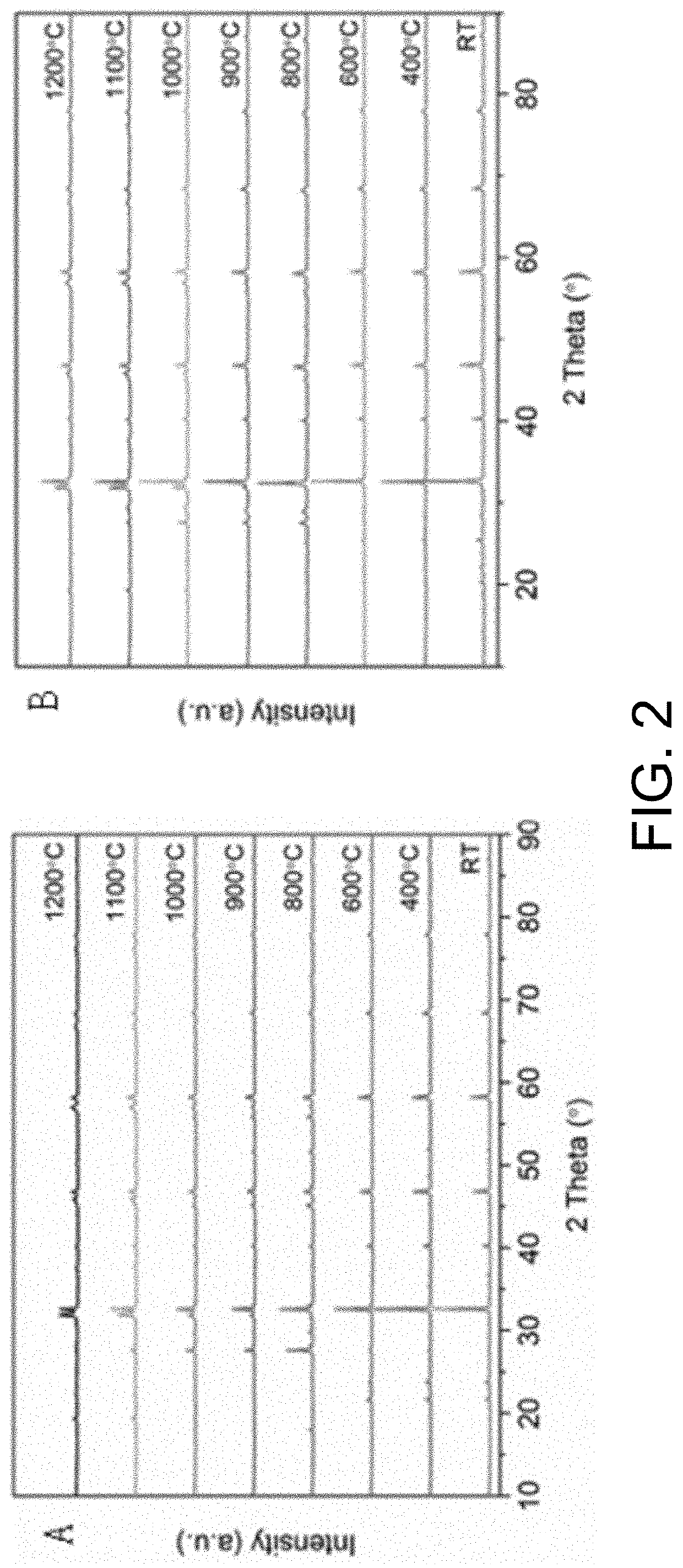Composite of cobalt-based perovskite material with negative thermal expansion material, and preparation method of same, and solid oxide fuel cell comprising same
a technology of negative thermal expansion and cobalt-based perovskite, which is applied in the field of cobalt-based perovskite material with negative thermal expansion material, and preparation method of same, and solid oxide fuel cell comprising same, etc., can solve the problems of loss of mass market of sofc, high cost, and high manufacturing and use costs of sofc, and achieve excellent electrochemical performance and low thermal expansivity , the effect of prominent mechanical tolerance in so
- Summary
- Abstract
- Description
- Claims
- Application Information
AI Technical Summary
Benefits of technology
Problems solved by technology
Method used
Image
Examples
Embodiment Construction
[0059]1. Preparation of SNC materials: Sr(NO3)2, C10H5NbO20, and Co(NO3)2.6H2O are mixed according to a predetermined stoichiometric ratio to obtain a resulting solution, and then the resulting solution is mixed with EDTA-NH3 and citric acid to obtain a solution with a pH of about 6 to 7, and the solution is subjected to evaporation for 5 h to obtain an SNC powder precursor (Evaluation of the CO2 Poisoning Effect on a Highly Active Cathode SrSc0.175Nb0.025Co0.8O3−δ in the Oxygen Reduction Reaction [J]. Acs Applied Materials & Interfaces, 2016, 8 (5): 3003). The solid precursor of SNC is calcined in air at 1,000° C. for 5 h to obtain a final powder. The SNC materials can also be prepared by a solid-phase method, and a specific preparation process can be seen in existing relevant technical documents, such as Wei, Zhou, and, et al. Structural, electrical and electrochemical characterizations of SrNb0.1Co0.9O3−δ as a cathode of solid oxide fuel cells operating below 60...
PUM
| Property | Measurement | Unit |
|---|---|---|
| operating temperature | aaaaa | aaaaa |
| temperature | aaaaa | aaaaa |
| temperature | aaaaa | aaaaa |
Abstract
Description
Claims
Application Information
 Login to View More
Login to View More - R&D
- Intellectual Property
- Life Sciences
- Materials
- Tech Scout
- Unparalleled Data Quality
- Higher Quality Content
- 60% Fewer Hallucinations
Browse by: Latest US Patents, China's latest patents, Technical Efficacy Thesaurus, Application Domain, Technology Topic, Popular Technical Reports.
© 2025 PatSnap. All rights reserved.Legal|Privacy policy|Modern Slavery Act Transparency Statement|Sitemap|About US| Contact US: help@patsnap.com



